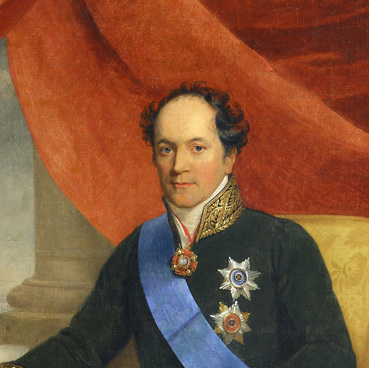Arthur Wellesley Wellington was born on 1 May 1769 in Dublin in an aristocratic family. He chose a military career for himself, entering royal military service, and became an infantry regiment officer. Wellington was rapidly promoted and by the age of 25 was already a lieutenant colonel.
Wellington served in India, and on his return to England was made a knights of the British Crown, and was elected as a Member of the Parliament of Great Britain in 1806. In the following two years, he served as Secretary of State in Ireland. Arthur Wellington is called the winner of Napoleon, as well as the winner of Europe.
In 1815 Wellington was a commander of the Confederate Army at the Battle of Waterloo. Wellington, joint by Prussian army under Blücher, caused a complete defeat of the Napoleonic army. After the battle, he was awarded the title of Russian Field Marshal General and was awarded the highest combat award of the Russian Empire, the Order of St. George of the 1st Degree.
The celebrated English commander was involved in various state affairs. For example, he was sent to Russia to congratulate the Emperor Nicholas I on his accession to the throne. From 1827 until the end of his life Wellington remained Commander-in-Chief of the Royal Army. He also served as Prime Minister of Great Britain. And later he served as Minister of Foreign Affairs. Duke Arthur Wellesley Wellington became a national hero in Great Britain.
Mikhail Vorontsov met the Duke of Wellington during the war with the French. Field marshals, having completely different characters and background, managed to get on well. The Duke was giving the bride away at the wedding of Mikhail Semisovich and by Orthodox tradition blessed the newly-weds with an icon.
One of the sculptures presented in the Vorontsovsky Museum-Reserve is the statue of the Duke of Wellington. The English sculptor Cotterill portrayed the Duke of Wellington riding his war horse, Copenhagen, who was also a participant in the Battle of Waterloo. The commander is standing on a high-level pedestal, on top of which grew stylized grass. Being cast from bronze, the statue was designed as draft for the monument. The monument to the military commander was planned to be installed on the corner of Hyde Park in London, near Wellington 's house, but the monument was not cast in large size.




